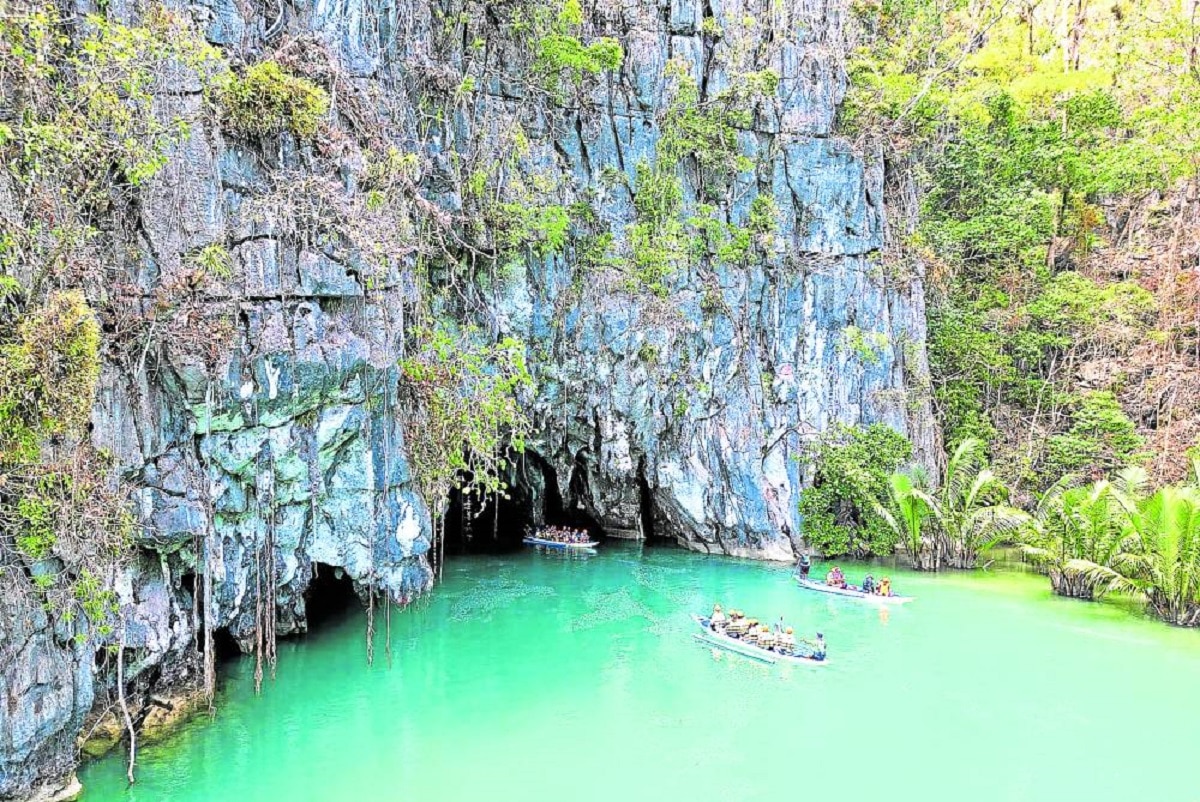
ECOTOURISM STAR The Puerto Princesa Subterranean River National Park or the Underground River, a Unesco World Heritage Site, is among the top tourist destinations in Palawan. The province, considered the Philippines’ “last frontier” and a top ecotourism spot, is enhancing its disaster preparedness amid the recent earthquakes in its waters. —Richard A. Reyes
PUERTO PRINCESA CITY, PALAWAN, Philippines —The provincial board of Palawan has called on the Provincial Disaster Risk Reduction Management Office (PDRRMO) to focus on enhancing its earthquake preparedness after government volcanologists warned that the province is not free from earthquakes after all.
The warning was issued as board members sought an explanation after the Philippine Institute of Volcanology and Seismology (Phivolcs) detected several quakes in the waters off Palawan since June.
During their regular session on Tuesday, Board Member Ryan Maminta filed a resolution seeking to enhance Palawan’s earthquake risk reduction management, preparedness and response measures in light of recent warnings from the Phivolcs. The resolution was adopted in its first reading.
READ: Earthquake preparedness saves lives: What to do
Maminta said that during the Disaster Risk Reduction and Management Summit held on July 23, Mario Aurelio, a professor of the University of the Philippines National Institute of Geological Science, provided scientific explanations on the recent occurrences of earthquakes in the northern and southeastern seas of Palawan.
Data gathered at the summit, he said, prove Palawan is not immune to seismic events and thus, it is also prone to earthquakes as well as its cascading effects like “tsunamis, landslide, soil erosion that may be potential events as a result of earthquake somewhere in Sulu Sea, somewhere in Mindoro [and] the Manila Trench.”
“So this resolution is addressed to concerned agencies such as the PDRRMO, MDRRMOs and the Mimaropa (Mindoro, Marinduque, Romblon, Palawan) regional Office of the Civil Defense for them to enhance our readiness and preparedness, and response measures for an event that may occur in the future,” he said.
Active faults
Phivolcs supervising science research specialist Jeffrey Perez, in a presentation during a disaster preparedness forum organized by SM City Puerto Princesa here on July 25, said that contrary to popular belief, Palawan was not earthquake-free. He noted that Palawan had experienced earthquakes in the past, the strongest of which dating back to 1897.
He said a lot of people were caught by surprise when four quakes were recorded by Phivolcs in June in the waters off Roxas and Coron towns.
A group of scientists from the Department of Science and Technology, including Perez, confirmed the presence of active faults nearby.
“As a geologist, I believe that there is really a possibility for earthquake to hit Palawan which may not come from underneath but from the sea like the Sulu trench or from Panay Island, Negros or Mindoro,” he said.
According to Perez, small faults, also known as local faults or blind faults, can be the source of earthquakes that cannot be detected because these are beneath the ocean floor.